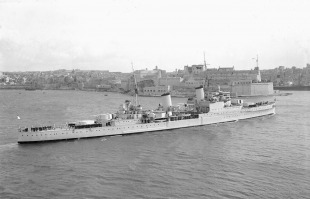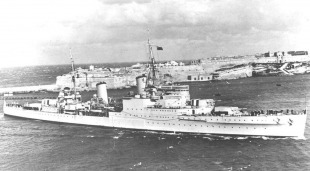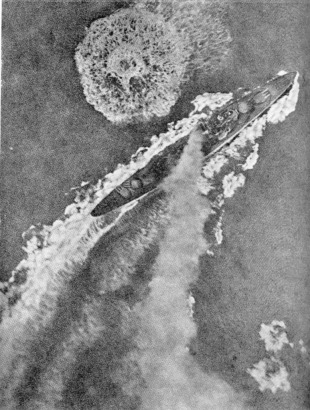Light cruiser HMS Gloucester (62)
Basic information
Ship measurements
Machine
- 4 * Parsons steam turbines
- 4 * Admiralty 3-drum boilers
- 4 * shafts
- 82,500 shp (61.5 MW)
Personnel
Combat assets
- Waterline belt: 4.5 n (114 mm)
- Deck: 2 in (51 mm)
- Gun turrets: 1–2 in (25–51 mm)
- 12 * BL 6 in (152 mm) Mark XXIII guns (4 * 3)
- 8 * QF 4 in (102 mm) Mark XVI guns (4 * 2)
- 8 * QF 2-pounder (40.5 mm) Mark VIII pom-pom guns (2 * 4)
- 8 * .5 in (12.7 mm) Vickers machine guns (2 * 4)
- 6 * 21-inch (533 mm) torpedo tubes (2 * 3)
- 2 * Supermarine Walrus aircraft
- 1 * catapult
- 2 * hangars
HMS Gloucester was one of the last batch of three Town-class light cruisers built for the Royal Navy during the late 1930s. Commissioned shortly before the start of World War II in August 1939, the ship was initially assigned to the China Station and was transferred to the Indian Ocean and later to South Africa to search for German commerce raiders. She was transferred to the Mediterranean Fleet in mid-1940 and spent much of her time escorting Malta Convoys. Gloucester played minor roles in the Battle of Calabria in 1940 and the Battle of Cape Matapan in 1941. She was sunk by German dive bombers on 22 May 1941 during the Battle of Crete with the loss of 722 men out of a crew of 807. Gloucester acquired the nickname «The Fighting G» after earning five battle honours in less than a year.
- Comments
 en
en ru
ru uk
uk





 Royal Navy
Royal Navy